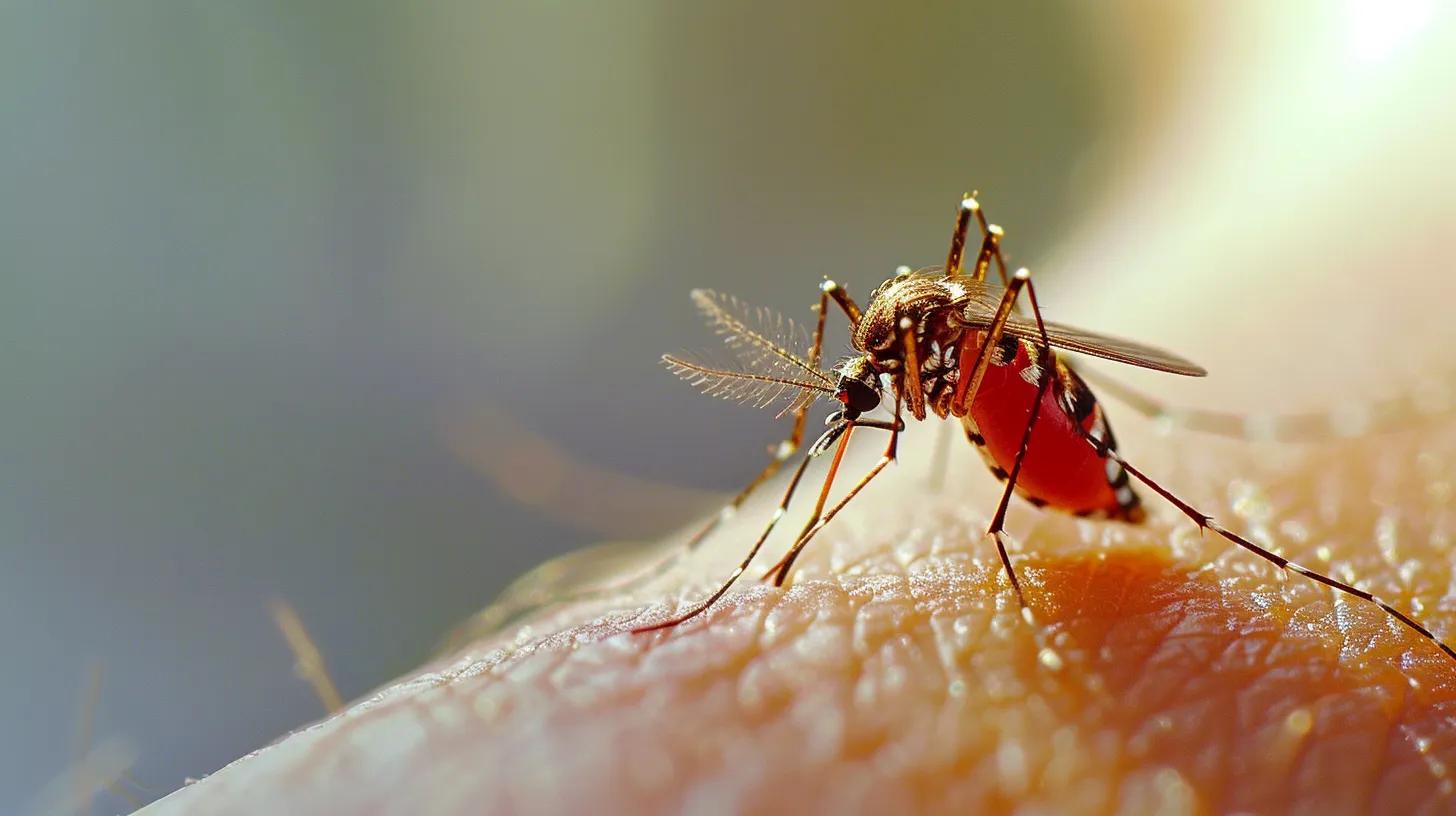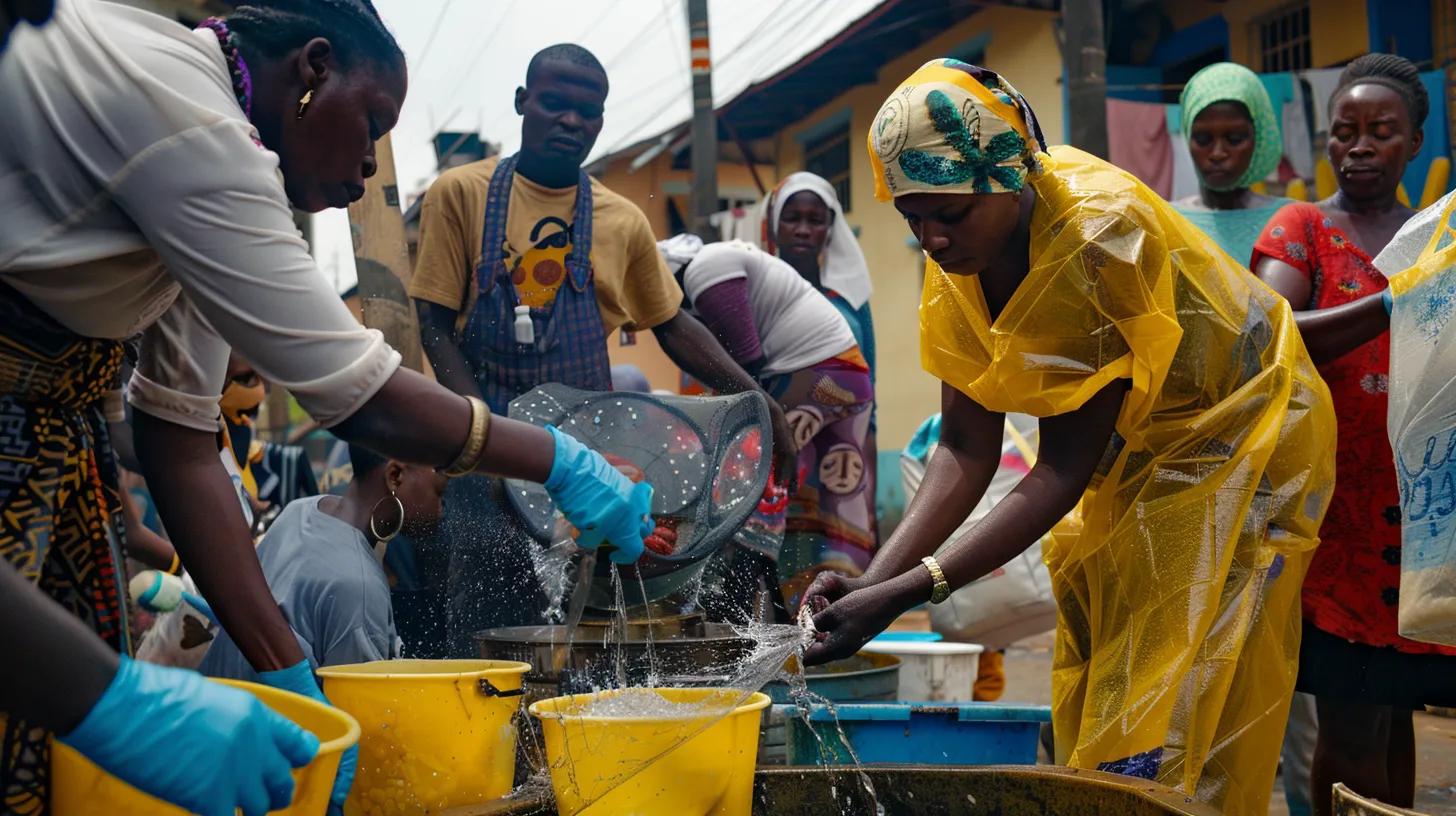Health Risks From Mosquito Bites You Need to Know
Key Takeaways
- Mosquito bites commonly cause itching, redness, and swelling, but serious symptoms may indicate infection or disease.
- Mosquito bites can transmit dangerous diseases such as malaria, Zika virus, dengue fever, West Nile virus, and chikungunya.
- Preventative measures like repellents, mosquito nets, eliminating breeding grounds, and proper clothing are essential for disease control.
- Treatment options range from home remedies for minor symptoms to immediate medical intervention for severe cases.
- Geographic risks and climate change reinforce the need for continuous awareness and protective strategies in high-risk areas.
What Are the Common Symptoms of Mosquito Bites?

Mosquito bites typically present with localized skin reactions, where the first sign is often an immediate itching sensation accompanied by mild redness and swelling. This common reaction occurs as the immune system responds to the mosquito’s saliva, which contains proteins that trigger irritation. For most individuals, these symptoms are temporary and resolve without medical intervention.
How to Recognize Typical Mosquito Bite Reactions (Itching, Redness, Swelling)
In typical cases, a mosquito bite is identifiable by a small, raised bump that turns red. The immediate reaction includes a mild swelling around the bite and intense itchiness due to histamine release. The rapid onset of these symptoms is a clear indication of the body’s allergic response to foreign proteins from the mosquito‘s saliva. In controlled studies, up to 90% of people experience a similar reaction, with variations in intensity based on personal sensitivity and frequency of exposure. Additional visual cues such as a small blister or pinpoint hemorrhage may also be present. Consistent monitoring of these initial symptoms is important for understanding whether the reaction remains mild or escalates into a more severe condition.
When Do Mosquito Bites Indicate a Serious Health Risk? (Fever, Headache, Body Aches)
While most mosquito bites are harmless, a serious health risk is indicated if the bite site is accompanied by systemic symptoms such as fever, severe headache, or generalized body aches. These signs may suggest that the mosquito is transmitting a pathogen, leading to infections like dengue fever or West Nile virus. The progression from localized symptoms to systemic illness usually occurs within a few days after the bite. Medical research shows that when symptoms such as high fever (exceeding 101°F), severe joint pain, or intense fatigue develop, they warrant immediate medical evaluation. Such manifestations are particularly concerning in children, the elderly, or people with compromised immune systems. These systemic signs generally require not only supportive care but sometimes antiviral or antibiotic therapy, depending on the pathogen involved.
How to Differentiate Between Normal and Disease-Related Symptoms (Rash, Fever, Neurological Signs)
Distinguishing between a routine mosquito bite and one that indicates a more serious disease involves careful observation of both local and systemic symptoms. Normal bite reactions are isolated to localized itching, redness, and swelling with no additional systemic disturbance. Conversely, when a rash extends well beyond the initial bite, or when fever, persistent headache, and neurological signs such as confusion or visual disturbances occur, these become red flags. For instance, studies in regions with high incidence of mosquito-borne diseases note that neurological symptoms can be early indicators of conditions like encephalitis. Prompt differentiation is crucial; if the patient exhibits significant fever coupled with a diffuse rash and signs of central nervous system involvement, they should seek professional medical care immediately. Early treatment is essential to prevent complications and to manage symptoms effectively.
Which Diseases Are Transmitted by Mosquito Bites?
Mosquito bites are not merely an annoyance; they can serve as vehicles for a range of infectious diseases. Several viruses and parasites are transmitted through mosquito saliva, placing millions of people at risk each year. These diseases vary from region to region, and understanding their symptoms and risks is essential for public health. The key transmitted diseases include malaria, Zika virus, West Nile virus, dengue fever, chikungunya, and others, each with its own profile and mode of transmission.
What Is Malaria and How Does It Affect Health?
Malaria is a parasitic infection caused by Plasmodium species that is transmitted primarily by Anopheles mosquitoes. The parasite enters the bloodstream through the mosquito’s saliva and invades red blood cells. Its hallmark symptoms include high fevers, chills, anemia, and in severe cases, neurological complications such as seizures or coma. Global health data shows that malaria causes hundreds of thousands of deaths annually, particularly in sub-Saharan Africa, though risk areas also include parts of Asia and Latin America. The disease’s cyclical fever patterns and potential complications like cerebral malaria make it a primary concern in endemic regions. Preventive measures and early diagnosis are crucial to reduce the morbidity and mortality associated with malaria.
What Are the Symptoms and Risks of Zika Virus Infection?
Zika virus is primarily transmitted by Aedes aegypti mosquitoes and is known for its mild but potentially serious impact. The infection often leads to symptoms such as fever, rash, joint pain, and conjunctivitis, though many infected individuals remain asymptomatic. However, the greatest risk of Zika virus lies in its association with birth defects. Pregnant women who contract the virus are at a significantly increased risk of delivering infants with microcephaly and other neurological abnormalities. Public health organizations stress the importance of mosquito control and effective personal protection measures to prevent Zika transmission, especially in tropical and subtropical regions where outbreaks can occur. Although most Zika infections are self-limiting, caution is advised for vulnerable populations.
How Does West Nile Virus Impact Humans?
West Nile virus, spread by Culex mosquitoes, predominantly causes a mild flu-like illness in most individuals but can occasionally lead to severe neurological disease such as encephalitis or meningitis. Approximately 20% of those infected may exhibit symptoms which include fever, headache, body aches, and sometimes a rash. In rare instances, particularly among older adults or those with compromised immune systems, the infection may progress to cause long-term neurological issues or even death. Epidemiological data indicates that while the majority recover without complications, severe cases require hospital care. Preventative measures such as the use of insect repellent and community mosquito control programs are essential to curb the incidence of West Nile virus.
What Should You Know About Dengue Fever and Chikungunya?
Dengue fever and chikungunya, both transmitted by Aedes mosquitoes, share several symptoms including high fever, joint pain, and rash, but they differ in severity and long-term impact. Dengue fever, sometimes referred to as “breakbone fever,” is notorious for its severe muscle and joint pain, and in its most severe manifestation, dengue hemorrhagic fever, it can lead to shock and even death. Chikungunya, while similar in presentation, tends to cause persistent joint pain that can last for months, affecting the patient’s quality of life. Both diseases have seen a global spread with periodic outbreaks in tropical and subtropical regions. Effective vector control and personal protective measures are key to reducing the spread of these debilitating diseases.
How Can You Prevent Mosquito Bites and Related Diseases?

Prevention remains the best strategy in minimizing the health risks associated with mosquito bites. A combination of personal protective measures and community-level interventions can significantly reduce the incidence of mosquito-borne diseases. These preventive strategies include using insect repellents, wearing appropriate clothing, employing physical barriers like nets, and eliminating standing water where mosquitoes breed. Additionally, behavioral modifications such as avoiding outdoor activities during peak mosquito activity hours are highly recommended. Emphasis on prevention is critical not only to protect individual health but also to safeguard communities from potential outbreaks of serious diseases like dengue, malaria, and Zika.
What Are the Most Effective Insect Repellents?
Insect repellents are one of the most direct and effective ways to prevent mosquito bites. Repellents containing DEET, picaridin, and oil of lemon eucalyptus have been clinically proven to repel mosquitoes for several hours per application. DEET-based products, in concentrations ranging from 20% to 50%, are widely recommended as they offer long-lasting protection without significant side effects when used properly. Picaridin, as an alternative, provides similar efficacy and is often preferred for its low odor and less greasy feel. Emerging formulations using icaridin and other analogs are also being tested to improve safety profiles and user compliance. For individuals in high-risk areas, regular use of these repellents, along with reapplication every few hours, can substantially reduce the risk of mosquito-borne infections.
How Do Mosquito Nets Protect Against Bites?
Mosquito nets serve as a physical barrier that minimizes human contact with mosquitoes while sleeping and during rest periods. When properly installed and maintained, these nets, especially those treated with insecticides like permethrin, can reduce the incidence of bites by over 70%. The mesh size is specifically designed to prevent mosquitoes from penetrating while still allowing air circulation. Scientific studies in endemic regions have demonstrated that the widespread use of long-lasting insecticidal nets (LLINs) has led to a marked decrease in malaria incidence and mortality. Their effectiveness depends on regular re-treatment and proper usage habits. In practical terms, using a mosquito net is a simple and cost-effective method for protecting vulnerable populations, particularly children and pregnant women, in high-risk areas.
What Practical Steps Eliminate Mosquito Breeding Grounds?
Eliminating mosquito breeding grounds is a fundamental aspect of community-wide mosquito control. Mosquitoes thrive in standing water, so it is crucial to remove or treat any stagnant water sources around homes and public spaces. This includes cleaning gutters, emptying flower pots, and covering water storage containers. Municipal authorities often implement larviciding programs to treat larger bodies of stagnant water that cannot be removed. Regular community clean-up campaigns and public awareness drives also play a significant role in reducing mosquito populations. Homeowners are encouraged to inspect their properties weekly to ensure that no unattended water containers or natural reservoirs provide a breeding habitat for mosquitoes. These environmental management practices are essential in creating a safer, mosquito-reduced environment.
How Does Clothing and Behavior Reduce Mosquito Exposure?
Appropriate clothing and behavioral modifications can further minimize exposure to mosquitoes. Long-sleeved shirts, long pants, socks, and closed-toe shoes are recommended, particularly during early morning and dusk when mosquitoes are most active. Light-colored clothing is preferable as it is less attractive to many mosquito species. Additionally, avoiding prolonged outdoor activities during peak mosquito times and ensuring that windows and doors are fitted with screens can help reduce contact with these insects. For those who work or play outdoors, treated clothing with permethrin has proven to be effective in deterring mosquito bites. These protective behaviors, when combined with other preventive measures, create a comprehensive defense against mosquito-borne illnesses and lower the overall risk of infection.
What Are the Best Treatment Options for Mosquito Bites and Infections?
Treating mosquito bites effectively involves a range of options that address both the localized skin irritation and potential systemic symptoms that may arise from mosquito-borne infections. While most people experience only mild symptoms that can be managed with over-the-counter remedies, there are situations where professional medical intervention is necessary. The treatment paradigm ranges from home remedies such as soap and water cleansing with hydrocortisone cream application for itching, to advanced medical treatments including antiviral medications and supportive care in cases of severe infections.
How to Treat Common Mosquito Bite Symptoms at Home?
Home treatment for mosquito bites often begins with cleaning the affected area using mild soap and water to reduce the risk of secondary bacterial infection. Over-the-counter (OTC) hydrocortisone cream or calamine lotion can be applied to alleviate itching and reduce inflammation. In addition, oral antihistamines, such as diphenhydramine or loratadine, may be recommended to manage allergic responses, particularly if multiple bites trigger severe itching or swelling. Cold compresses also help by numbing the area and reducing swelling. Natural remedies like aloe vera gel or tea tree oil have been traditionally used for their soothing and antiseptic properties. Maintaining a clean environment and refraining from scratching the bite can prevent complications like skin infections. These home care strategies are especially useful for minor symptoms and serve as a first line of defense in protecting the skin.
When Should You Seek Medical Attention for a Mosquito Bite?
Medical attention should be considered if symptoms persist or escalate beyond the typical localized reaction. When a mosquito bite leads to high fever, severe headache, or signs of an allergic reaction such as difficulty breathing, immediate consultation with a healthcare provider is warranted. Moreover, if there is a rapid spread of rash or if neurological symptoms such as confusion, vision changes, or weakness develop, these may indicate a serious mosquito-borne illness or anaphylaxis. Individuals with pre-existing health conditions or compromised immune systems are particularly advised to be vigilant. Early intervention can be critical in managing diseases such as dengue fever or West Nile virus. In cases where over-the-counter treatments do not alleviate symptoms within a few days, or if new symptoms develop, a professional evaluation is essential to ensure proper diagnosis and treatment.
What Medical Treatments Are Available for Mosquito-Borne Diseases?
When a mosquito bite results in a diagnosed mosquito-borne disease, treatment options typically become more complex and are tailored to the specific pathogen involved. For instance, malaria treatment involves antimalarial drugs such as artemisinin-based combination therapies, while dengue and chikungunya are generally managed with supportive care, including fluid replacement and pain relievers. In severe cases of West Nile virus or encephalitis, hospitalization may be necessary to provide intravenous fluids and supportive management of neurological complications. Vaccines are available for certain mosquito-borne infections like yellow fever, and research continues into developing effective immunizations for diseases such as dengue fever. The choice of treatment is guided by clinical guidelines and may involve laboratory testing to determine the exact cause of the illness. Early diagnosis and targeted treatment are critical to reduce the risk of complications and long-term health impacts.
Where Are Mosquito-Borne Diseases Most Common and What Are the Geographic Risks?

Mosquito-borne diseases exhibit distinct geographical distributions, largely influenced by climate, environmental conditions, and local infrastructure. Tropical and subtropical regions, especially areas with warm climates and high humidity, consistently report higher rates of diseases like malaria, dengue fever, and Zika virus. Changes in global weather patterns and climate change are altering these patterns further, allowing mosquito populations—and the diseases they carry—to spread to regions previously unaffected. Urban areas with inadequate sanitation and rural regions with standing water bodies are particularly vulnerable. Public health records indicate that regions in sub-Saharan Africa, Southeast Asia, and parts of Latin America are among the most affected. Understanding these geographic risks is essential for travelers, policy makers, and health professionals to develop effective prevention and control strategies.
Which Regions Have the Highest Malaria and Dengue Fever Rates?
Sub-Saharan Africa remains the region with the highest malaria rates, largely due to the prevalence of the Anopheles mosquito and conducive environmental conditions. Dengue fever, on the other hand, is endemic in large parts of Southeast Asia, South America, and the Caribbean. For example, countries like Nigeria, the Democratic Republic of Congo, and Uganda report some of the highest incidences of malaria, while dengue outbreaks are frequent in Brazil, Indonesia, and Thailand. The World Health Organization regularly updates data on the incidence and mortality rates of these diseases, and such statistics underscore the vital need for robust healthcare interventions in these regions. Travelers and local populations alike must exercise caution and adhere to preventive measures in these high-risk zones.
How Does Climate Change Affect Mosquito Populations and Disease Spread?
Climate change plays a significant role in altering mosquito habitats and expanding the geographical areas susceptible to mosquito-borne diseases. Warmer temperatures, increased rainfall, and changes in humidity levels create ideal conditions for mosquito breeding, survival, and rapid reproduction. As a result, areas that previously experienced minimal mosquito activity are now reporting increased outbreaks of diseases such as dengue fever and West Nile virus. Scientific models predict that the range of vector species like Aedes aegypti and Anopheles mosquitoes will continue to expand, bringing with them the potential for new public health challenges. This makes it crucial for governments and health organizations to monitor environmental changes closely and adapt their disease control strategies accordingly.
What Travel Precautions Should You Take in High-Risk Areas?
When traveling to high-risk areas where mosquito-borne diseases are prevalent, several precautions can minimize your risk of infection. It is advisable to consult travel health advisories and receive necessary vaccinations before departure. Carry and consistently apply effective insect repellents such as those containing DEET, picaridin, or oil of lemon eucalyptus. Wearing long-sleeved clothing, using mosquito nets while sleeping, and staying in accommodations with proper screening can offer significant protection. Additionally, planning travels during seasons of lower mosquito activity and avoiding outdoor activities at dawn and dusk can further reduce risk. Travelers should also be aware of early symptoms of infections to seek timely medical attention if needed.
What Are the Lesser-Known Mosquito-Borne Diseases You Should Be Aware Of?
Beyond the widely recognized diseases such as malaria, dengue, and Zika, there are several lesser-known mosquito-borne illnesses that nonetheless pose significant health risks. These emerging pathogens may not always be in the public spotlight but can cause serious health complications. Knowledge of these diseases is particularly important for residents and travelers in affected regions. Enhanced surveillance and research are vital for understanding their transmission, identifying symptoms early, and developing specific treatments.
What Is Chikungunya and How Does It Affect Health?
Chikungunya is a viral disease transmitted by Aedes mosquitoes and is characterized by severe muscle and joint pain that can be debilitating and long-lasting. While its initial symptoms resemble those of dengue fever—fever, headache, and rash—the persistent joint pain is a distinguishing feature, often lasting for months after the initial infection. Experimental treatments and supportive care, such as pain management and anti-inflammatory medications, are typically employed as no specific antiviral treatment exists. The social and economic impacts of chikungunya outbreaks are significant, as the prolonged symptoms can hinder daily activities and productivity. Public health strategies continue to evolve to control its spread, emphasizing early detection and community education.
Are There Other Emerging Mosquito-Borne Viruses?
Yes, beyond the well-known viruses, there are several emerging mosquito-borne viruses that researchers are currently monitoring. These include certain strains of encephalitis and lesser-known arboviruses that have the potential to cause outbreaks in previously unaffected regions. Medical professionals emphasize that even viruses with low initial morbidity rates can evolve or combine with other pathogens to form new, more dangerous variants. Constant surveillance and research are essential in identifying these emerging threats early, ensuring that public health responses and vaccination strategies can adapt in time to prevent larger outbreaks.
What Are Frequently Asked Questions About Mosquito Bites and Health Risks?

How Long Do Mosquito Bite Symptoms Last?
Typically, the minor symptoms of a mosquito bite, such as itching, redness, and mild swelling, last between two to three days, although in some individuals, they may persist for up to a week. The duration largely depends on the person’s immune response and whether the bite is scratched, which can lead to prolonged irritation or secondary infection. In cases where systemic symptoms—such as fever or rash—develop, the duration may extend longer, and it is advisable to consult with a medical professional for proper evaluation and treatment. Effective home remedies and over-the-counter medications can help alleviate the discomfort during these days.
Can Mosquito Bites Cause Allergic Reactions?
Some individuals may experience severe allergic reactions to mosquito bites, a condition sometimes referred to as skeeter syndrome. These reactions can include intense swelling, blistering, or even systemic symptoms such as anaphylaxis in very rare cases. While most reactions are localized and resolve on their own, individuals with known allergies or those who observe signs of anaphylaxis—such as difficulty breathing or a rapid heartbeat—should seek immediate medical attention. Allergy testing and consulting with an allergist may be beneficial for persons with recurring severe reactions.
Are Some People More Susceptible to Mosquito-Borne Diseases?
Certain factors can increase an individual’s susceptibility to mosquito-borne diseases. For example, people with weak immune systems, chronic illnesses, or those who have had previous exposure to mosquito saliva may develop a heightened response. Additionally, genetic predispositions, age, and underlying health conditions like diabetes or heart disease affect susceptibility. Pregnant women and young children are particularly vulnerable to severe complications from infections like Zika virus, dengue fever, and malaria. Awareness of these risk factors is vital for taking appropriate preventive measures.
How Effective Are Natural Mosquito Repellents Compared to Chemical Ones?
Natural mosquito repellents, which often contain ingredients such as eucalyptus oil and citronella, provide a moderate level of protection and are a popular choice for those seeking organic alternatives. However, chemical repellents like DEET and picaridin are generally more effective and provide longer-lasting protection. Studies comparing both types indicate that while natural repellents can be useful in areas with lower mosquito activity, high-risk regions often require the stronger and more reliable efficacy of chemical formulations. Each repellent has its advantages, and the choice may depend on personal preferences and specific exposure risk.
Frequently Asked Questions
Q: What steps can I take immediately after getting a mosquito bite? A: Immediately clean the bite with soap and water and apply an ice pack or cold compress to reduce swelling. Using an over-the-counter hydrocortisone cream or antihistamine can alleviate itching. Avoid scratching to lessen the risk of secondary infections.
Q: How do I know if my mosquito bite has become infected? A: Indicators of infection include increased redness spreading from the bite, pus formation, excessive swelling, or pain and warmth around the area. Accompanying systemic symptoms like fever may also signal infection. Consult a healthcare provider if these signs occur for proper treatment.
Q: Are treated mosquito nets sufficient for protection against all mosquito-borne diseases? A: Mosquito nets treated with insecticides such as permethrin are highly effective in reducing the risk of bites during sleep. However, in high-risk areas or regions experiencing outbreaks of diseases like dengue or malaria, additional measures like repellents and proper clothing are recommended to ensure comprehensive protection.
Q: What role does climate change play in the spread of mosquito-borne diseases? A: Climate change, through increased temperatures and altered precipitation patterns, has a significant impact on mosquito populations by expanding their breeding grounds and accelerating their life cycles. This expansion increases the geographical range of mosquito-borne diseases, making it essential for at-risk communities to adapt their prevention strategies accordingly.
Q: Can I use natural remedies to treat severe reactions from mosquito bites? A: While natural remedies such as aloe vera or tea tree oil can soothe minor symptoms, severe reactions or signs of systemic infection require prompt medical attention. Relying solely on natural remedies in such cases can delay critical treatment needed to combat potential complications like encephalitis or severe allergic reactions.
Final Thoughts
Mosquito bites, while common and often benign, can sometimes herald serious health risks, particularly when they transmit diseases like malaria, dengue fever, or Zika virus. This article underscores the importance of recognizing both the typical and atypical symptoms associated with mosquito bites, as well as the prevention and treatment strategies necessary to mitigate these risks. Preventative measures—including the use of repellents, mosquito nets, and behavioral modifications—are essential tools in the fight against mosquito-borne illnesses. Remaining vigilant, staying informed about regional risks, and seeking timely medical treatment are key to safeguarding health in mosquito-prone areas.
Before concluding, it is useful to consolidate the information with a table summarizing key symptoms, their potential risks, and recommended treatments. This table serves as an at-a-glance reference for quickly identifying when a mosquito bite has escalated into something more serious while also highlighting the appropriate responses.
Additionally, a comprehensive list of the most recommended preventive measures might help empower at-risk communities—especially during peak mosquito transmission seasons. The proven benefits of treated mosquito nets, EPA-approved repellents, and home-based environmental management can drastically reduce the incidence of serious mosquito-borne diseases.
By integrating awareness, preparedness, and prompt treatment, individuals and communities can significantly reduce the health risks posed by mosquito bites. It remains crucial for public health officials and individuals alike to adapt to evolving environmental conditions and invest in both personal and community-level disease prevention strategies.
Taking a proactive approach not only minimizes the immediate discomfort caused by mosquito bites but also plays a vital role in the larger context of disease control and health promotion. Communities that prioritize mosquito control and prevention see tangible reductions in disease transmission and improved overall public health. With ongoing research and public health initiatives, there is hope for better management—and perhaps eventual eradication—of the most dangerous mosquito-borne illnesses.

17 Years of Pest Control Experience Founder and Owner of Dade Pest Solutions Proud Resident of South Florida
Shaun Judy, a dedicated South Florida native, is the founder and driving force behind Dade Pest Solutions. With over 17 years of hands-on experience in the pest control industry, Shaun has built a reputation for reliability, results, and real local knowledge. His journey began with a deep commitment to protecting homes from pests using proven methods and innovative solutions. Raised with a strong work ethic and a passion for service, Shaun treats every property as if it were his own—delivering expert care with a personal touch.

